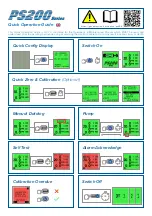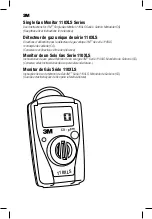
39
Consumable Replacement
(4)
Install the battery cover. Rotate the battery cover lock (screw)
clockwise until it is tight (until the head of the screw is flush
with the battery cover surface) with a Phillips screwdriver.
Charge Batteries
Battery charging may take longer if the batteries have been left
unused for an extended period of time.
When used at low temperature, the battery life will be shorter than
when used at room temperature due to the battery’s characteristics.
If the battery level is low, it is recommended to charge the batteries
before they become empty.
Rechargeable batteries deteriorate after repeated charge/discharge
cycles, which reduces the battery life. Replace the batteries if
continuous operation time becomes extremely short, indicating the
end of the battery life.
If is displayed, it is recommended to charge the batteries before
they become empty.
NOTE
Firmly tighten the battery cover lock. Loose battery cover
lock may impair the product’s explosionproof/waterproof
performance.
CAUTION
If the battery level is still low even after battery replacement,
remove the batteries, and reinstall them.
Do not charge the batteries in a hazardous area.
Do not charge the batteries at a place where temperature/humidity
may exceed the range 0 to +40
C
/0 to 85%RH (no condensation or
sudden change in temperature or humidity).
To charge the batteries, use a dedicated charger (BC-10,
separately sold). Also, read the instruction manual for the charger.
Only use specified nickel metal hydride AA batteries (New Cosmos
HR-3UTG). Using batteries other than those specified may impair
the product’s explosion-proof performance.
Ensure that all the four batteries have the same serial number.
Remove contaminants from the joint surfaces between the main
unit and battery cover. Contaminants such as dirt may cause water
ingress into the detector.
Clean the charging terminal with a dry cotton swab, if dirty. Be
careful not to damage the terminal while cleaning. A damaged or
contaminated terminal may cause insufficiant battery charge,
resulting in shorter continuous operation time.
The detector must only be charged in a non-hazadous area using
the manufacturer’s charger type BC-10 (with Um = 60 V) and in
an ambient temperature range of 0 to +40ºC. If the detector is
marked for use with T3 only or both T3 and T4, the user shall
check the battery type before charging and only attempt to charge
the detector if it contains NiMh batteries. Detector marked T4 only,
shall not be recharged.
WARNING
NOTE
















































